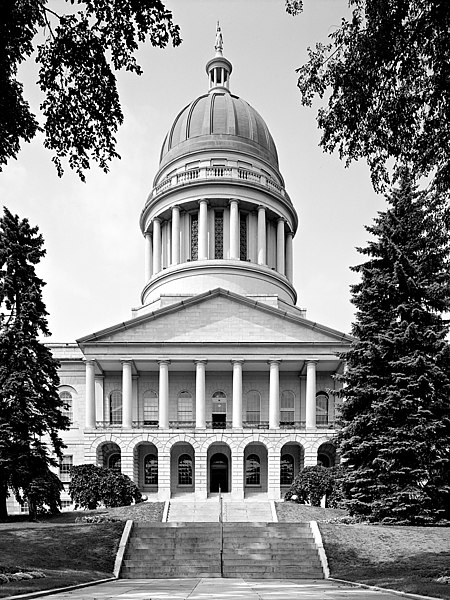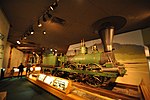Maine State House
Buildings and structures in Augusta, MaineCharles Bulfinch buildingsGovernment buildings in MaineGovernment buildings on the National Register of Historic Places in MaineGovernment buildings with domes ... and 7 more
Government of MaineHistoric district contributing properties in MaineNRHP infobox with nocatNational Register of Historic Places in Augusta, MaineState capitols in the United StatesTourist attractions in Augusta, MaineUse mdy dates from August 2023

The Maine State House in Augusta, Maine, is the state capitol of the State of Maine. The building was completed in 1832, one year after Augusta became the capital of Maine. Built using Maine granite, the State House was based on the design of the Massachusetts State House (Maine was formerly part of Massachusetts, and became a separate state in 1820). Governor Janet Mills and the Maine Legislature convene at the State House.
Excerpt from the Wikipedia article Maine State House (License: CC BY-SA 3.0, Authors, Images).Maine State House
State Street, Augusta
Geographical coordinates (GPS) Address Phone number Website External links Nearby Places Show on map
Geographical coordinates (GPS)
| Latitude | Longitude |
|---|---|
| N 44.307237 ° | E -69.781676 ° |
Address
Maine State House
State Street 210
04330 Augusta
Maine, United States
Open on Google Maps











